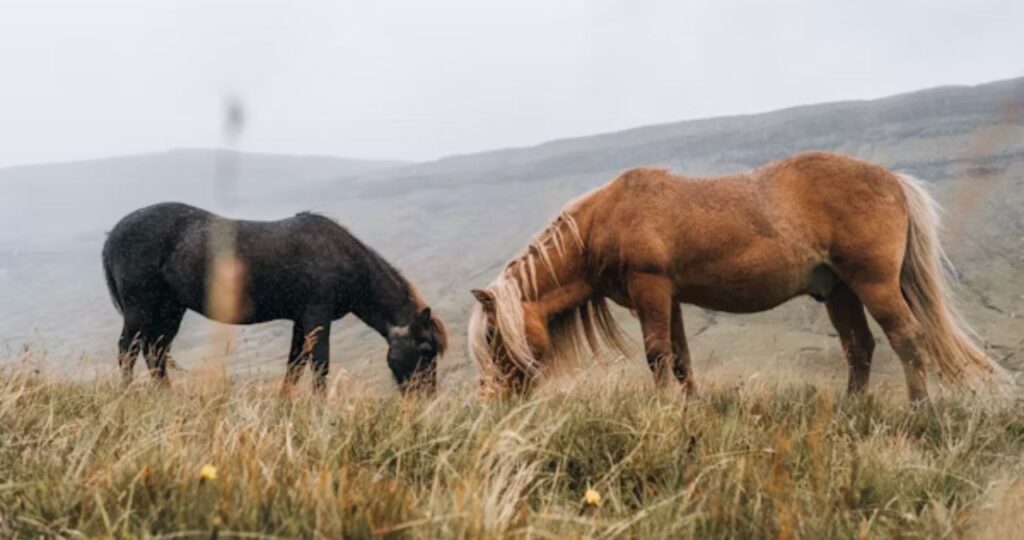When most people encounter horseplop—better known as horse manure—their initial reaction is to avoid it at all costs. To many, it’s nothing more than waste, an unsightly inconvenience along trails or in stables. Yet, beyond its pungent reputation, horseplop is a substance deeply embedded in science, ecology, and culture. From fertilizing fields to sustaining microbial ecosystems and even shaping human traditions, horse manure plays a surprisingly vital role.
In this article, we will explore the scientific composition of horseplop, its ecological significance, cultural perspectives, and the innovative ways people are rethinking this misunderstood material.
The Science of Horseplop: Composition and Properties
Horseplop is far more than just undigested plant matter. Scientifically speaking, it is a mixture of water (about 75%), fibrous plant residues, bacteria, and organic compounds. Because horses are hindgut fermenters, they do not digest all the cellulose from grasses and grains, leaving behind nutrient-rich matter.
Key components include:
-
Nitrogen, phosphorus, and potassium (NPK): Essential nutrients for plant growth.
-
Fiber and organic matter: Improving soil aeration and structure.
-
Beneficial microbes: Supporting decomposition and enriching soil microbiomes.
Unlike carnivorous animal waste, horse manure is less likely to carry harmful pathogens, making it safer for agricultural use. This nutrient density has made horseplop a valuable resource in traditional and modern farming alike.
Ecological Role: From Soil Health to Biodiversity
In ecosystems, horseplop is a hidden powerhouse. It acts as a miniature habitat, feeding countless organisms that thrive on organic waste.
-
Soil enrichment: Decomposed horseplop improves soil fertility, water retention, and microbial balance.
-
Insect diversity: Dung beetles, flies, and other insects rely on manure as a breeding ground and food source, playing vital roles in decomposition cycles.
-
Carbon cycling: By breaking down organic matter, horse manure helps recycle carbon back into the soil, reducing the need for synthetic fertilizers.
In grassland and pasture ecosystems, horseplop contributes to a balance between grazers, plants, and decomposers, forming a continuous loop of nutrient renewal.
Horseplop in Agriculture: A Historical Backbone
Historically, horseplop has been an indispensable part of agriculture. Before chemical fertilizers became widespread, farmers depended on manure to maintain soil fertility. Horse-drawn societies—from medieval Europe to early American farms—used manure both as a direct fertilizer and as a key ingredient in compost.
Even today, organic farming embraces horse manure for:
-
Natural soil enrichment without synthetic chemicals.
-
Composting blends to accelerate decomposition.
-
Sustainable crop cycles that rely on renewable waste sources.
This cyclical use of horseplop illustrates how pre-industrial societies practiced sustainable farming long before modern ecological movements.
Cultural Attitudes Toward Horseplop
The cultural perception of horseplop is complex. On one hand, it is often associated with filth, bad smells, and the “dirty” side of rural life. On the other, it has symbolic and practical significance in various traditions:
-
Folk sayings and humor: Horse manure has long been a staple of jokes and proverbs, often used as a metaphor for exaggeration or dishonesty.
-
Practical crafts: In some cultures, dried horse manure has been used as fuel, insulation, or even construction material.
-
Rituals and beliefs: In agrarian societies, manure represented abundance and fertility, embodying the cycle of life and renewal.
These dual attitudes—disgust and reverence—show how horseplop straddles the line between nuisance and necessity.
Modern Innovations: Rethinking Horseplop in the 21st Century
Today, researchers and entrepreneurs are rediscovering the potential of horseplop in innovative ways. Some emerging uses include:
-
Biofuel production: Horse manure can be converted into methane for renewable energy.
-
Biodegradable materials: Scientists are experimenting with using manure fibers in paper, packaging, and textiles.
-
Eco-friendly gardening products: Bagged horse manure compost is sold worldwide for home gardening enthusiasts.
-
Carbon sequestration strategies: Studies suggest manure management could play a role in reducing greenhouse gas emissions from agriculture.
What was once considered a messy byproduct is now being reframed as a renewable resource in the circular economy.
Environmental Challenges and Responsible Management
Despite its benefits, unmanaged horseplop can also pose problems. Excessive manure accumulation near stables can lead to nutrient runoff, contaminating waterways with nitrogen and phosphorus. This runoff may contribute to algal blooms, oxygen depletion, and ecosystem imbalance.
Responsible manure management practices include:
-
Composting before application to reduce pathogens and odors.
-
Proper storage systems to prevent leaching into groundwater.
-
Integration with crop rotation systems for balanced nutrient cycling.
When handled thoughtfully, horseplop remains a sustainable ally rather than an environmental hazard.
The Future of Horseplop: From Waste to Resource
As society grapples with sustainability and resource scarcity, horseplop is finding new relevance. Its transformation from an unwanted waste product to a valued resource reflects larger shifts in how we view natural cycles. By embracing its ecological, agricultural, and cultural roles, we unlock opportunities for greener farming, renewable energy, and sustainable lifestyles.






